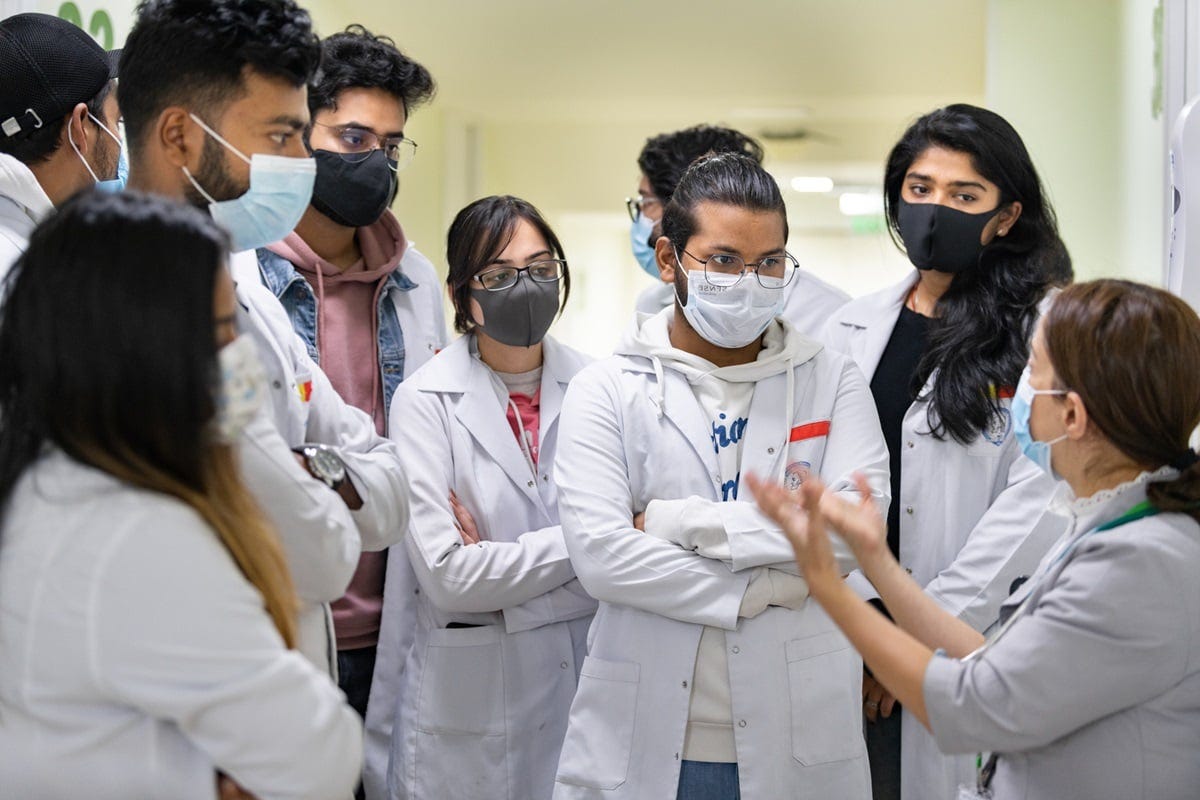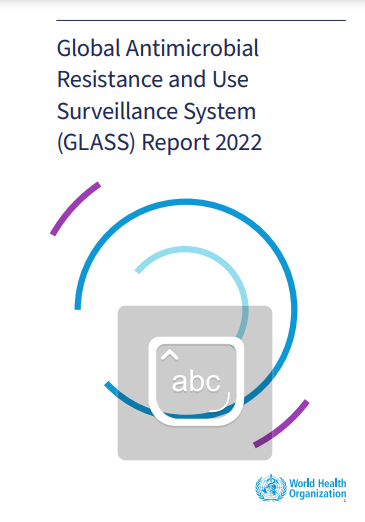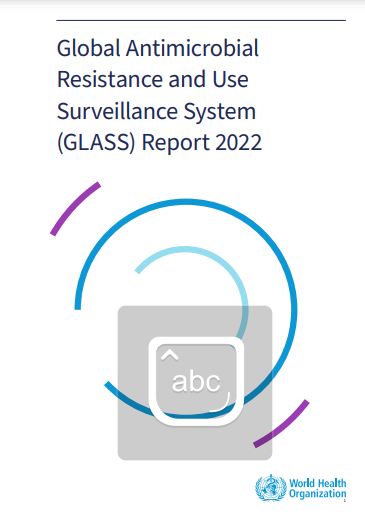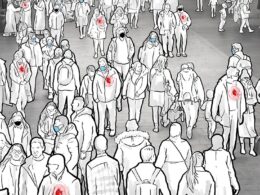Health Transformation Institute (HTI)
institute for continuous health transformation
Joaquim Cardoso MSc*
Founder, Chief Researcher & Editor
December 9, 2022
MSc* from London Business School
MIT Sloan Masters Program (European Version)
ORIGINAL PUBLICATION

WHO report signals increasing resistance to antibiotics in bacterial infections in humans and need for better data
WHO
9 December 2022
A new World Health Organization (WHO) report reveals high levels of resistance in bacteria, causing life-threatening bloodstream infections, as well as increasing resistance to treatment in several bacteria causing common infections in the community based on data reported by 87 countries in 2020.
For the first time, the Global Antimicrobial Resistance and Use Surveillance System (GLASS) report provides analyses for antimicrobial resistance (AMR) rates in the context of national testing coverage, AMR trends since 2017, and data on antimicrobial consumption in humans in 27 countries.
Within six years, GLASS achieved participation from 127 countries with 72% of the world’s population.
The report includes an innovative interactive digital format to facilitate data extraction and graphics.
The report shows high levels (above 50%) of resistance were reported in bacteria frequently causing bloodstream infections in hospitals, such as Klebsiella pneumoniae and Acinetobacter spp.
These life-threatening infections require treatment with last-resort antibiotics, such as carbapenems.
However, 8% of bloodstream infections caused by Klebsiella pneumoniae were reported as resistant to carbapenems, increasing the risk of death due to unmanageable infections.

Common bacterial infections are becoming increasingly resistant to treatments.
Over 60% of Neisseria gonorrhoea isolates, a common sexually transmitted disease, have shown resistance to one of the most used oral antibacterials, ciprofloxacin. Over 20% of E.coli isolates — the most common pathogen in urinary tract infections — were resistant to both first-line drugs (ampicillin and co-trimoxazole) and second-line treatments (fluoroquinolones).
“Antimicrobial resistance undermines modern medicine and puts millions of lives at risk,” said Dr Tedros Adhanom Ghebreyesus, WHO Director-General. “To truly understand the extent of the global threat and mount an effective public health response to AMR, we must scale up microbiology testing and provide quality-assured data across all countries, not just wealthier ones.”
Although most resistance trends have remained stable over the past 4 years, bloodstream infections due to resistant Escherichia coli and Salmonella spp. and resistant gonorrhoea infections increased by at least 15% compared to rates in 2017.
More research is needed to identify the reasons behind the observed AMR increase and to what extent it is related to raised hospitalizations and increased antibiotic treatments during the COVID-19 pandemic. The pandemic also meant that several countries were unable to report data for 2020.
New analyses show that countries with a lower testing coverage, mostly low- and middle-income countries (LMICs), are more likely to report significantly higher AMR rates for most “bug-drug” combinations.
This may be (partly) due to the fact that in many LMICs, a limited number of referral hospitals report to GLASS. These hospitals often care for the sickest patients who may have received previous antibiotic treatment.
For example, the global median AMR levels were 42% ( E. Coli) and 35% (Methicilin-resistant Staphylococcus aureus — MRSA) — the two AMR Sustainable Development Goal indicators. But when only countries with high testing coverage were considered, these levels were markedly lower at 11% and 6.8%, respectively.
As for antimicrobial consumption in humans, 65% of 27 reporting countries met WHO’s target of ensuring that at least 60% of antimicrobials consumed are from the ‘ACCESS’ group of antibiotics, …
… i.e. antibiotics which — according to the WHO AWaRE classification — are effective in a wide range of common infections and have a relatively low risk of creating resistance.
AMR rates remain difficult to interpret due to insufficient testing coverage and weak laboratory capacity, particularly in low- and middle-income countries.
To overcome this critical gap, WHO will follow a two-pronged approach aiming at short-term evidence generation through surveys and long-term capacity building for routine surveillance. This will entail the introduction of representative national AMR prevalence surveys to generate AMR baseline and trend data for policy development and monitoring of interventions and an increase of quality-assured laboratories reporting representative AMR data at all levels of the health system.
Responding to trends of antimicrobial resistance requires high-level commitment from countries to boost surveillance capacity and provide quality assured data as well as action by all people and communities.
By strengthening the collection of standardized quality AMR and AMC data, the next phase of GLASS will underpin effective data-driven action to stop the emergence and spread of AMR and protect the use of antimicrobial medicines for future generations.
Originally published at https://www.who.int on December 9, 2022.
REFERENCE PUBLICATION

BASIC FACTS ON AMR AMR [excerpt of Section 1.1 of the report]
AMR is among the top 10 global health threats (1).
Resistance of bacteria to antibiotics (antibiotic resistance) is an urgent global public health and socioeconomic problem.
Modern medicine depends on effective antimicrobial medicines, yet high rates of resistant infections across a broad range of microorganisms have been documented in all World Health Organization (WHO) regions (2).
Modern medicine depends on effective antimicrobial medicines, yet high rates of resistant infections across a broad range of microorganisms have been documented in all World Health Organization (WHO) regions
Murray et al. estimated that 4·95 million deaths were associated with bacterial antibiotic resistance, including 1·27 million deaths attributable to bacterial AMR in 2019 (2).
The World Bank estimated that up to 3.8% of the global gross domestic product could be lost due to AMR by 2050 (3).
Murray et al. estimated that 4·95 million deaths were associated with bacterial antibiotic resistance, including 1·27 million deaths attributable to bacterial AMR in 2019 (2).
The World Bank estimated that up to 3.8% of the global gross domestic product could be lost due to AMR by 2050 (3).
Although the overuse or misuse of antibiotics are primary drivers of the emergence of AMR, other multiple interconnected factors contribute to its prevalence and spread.
Higher AMR rates have been documented in several low- and middle-income countries (LMICs) compared to rates in high-income countries, despite a lower per-person consumption of antibiotics in the former (4, 5).
Higher AMR rates have been documented in several low- and middle-income countries (LMICs) compared to rates in high-income countries, despite a lower per-person consumption of antibiotics in the former
Strengthening surveillance of AMR is pivotal to enhancing the scientific basis to inform risk assessments and identify opportunities for mitigation.
In May 2015, the Sixty-eighth session of the World Health Assembly adopted a global action plan endorsing the urgent need for strengthening the knowledge and evidence base of AMR through surveillance and research to tackle the AMR threat (6).
In the same year, the Global Antimicrobial Resistance and Use Surveillance System (GLASS) was launched by WHO (7).
Since then, there has been a significant investment in improving AMR surveillance to generate high-quality evidence of its magnitude, distribution, and diversity globally (7).
Notably, GLASS is the first system that has enabled the harmonized global reporting of official national AMR and antimicrobial consumption (AMC) data (7, 8).
More recently, following the 2022 G7 Health Ministers’ meeting in Berlin, Germany, the G7 declared its commitment to strengthening and supporting national surveillance and intelligence systems for emerging AMR threats as part of the G7 Pact for Pandemic Readiness (9).
Recognizing that although almost 90% of countries have developed an AMR national action plan on AMR, only 20% have identified funding for implementing and monitoring these plans, the G7 has also committed to address this main challenge at the country level and to facilitate the mobilization of domestic and external financing by supporting the development of national investment in the AMR response in LMICs (9)
… although almost 90% of countries have developed an AMR national action plan on AMR, only 20% have identified funding for implementing and monitoring these plans,
Despite global and regional efforts, considerable gaps remain in our understanding of the magnitude, distribution and trend of drug-resistant infections at the national and global level.
Developing and sustaining robust national surveillance systems is challenging, particularly in LMICs.
Robust surveillance systems require coverage of the population, access to quality assured laboratory services, adequate diagnostic stewardship, and strong reporting systems.
While many high-income countries meet these requirements through systematic continuous data collection and analysis from routine clinical practice, most LMICs are not yet able to generate quality representative data that can inform national policy development, evaluate trends, or allow for country comparisons.
This is of great concern as preliminary data suggest that LMICs face a significant AMR threat that requires urgent evidence-based actions.
For this reason, GLASS has developed a complementary approach to collect quality representative data in LMICs.
This innovative approach proposes periodic, nationally representative AMR surveys that target countries where it will take time to establish robust surveillance systems.
Knowledge of the relative contribution of different AMR drivers needs to be improved.
GLASS seeks to monitor antimicrobial use (AMU) as a major driver of AMR by collating the nationally aggregated data on antimicrobial consumption (AMC), as well as promoting studies on antibiotic prescription practices.
Together with national representative quality AMR data, AMC monitoring will accurately guide strategies to contain and mitigate the impact of AMR on human health.
Names mentioned
Dr. Hanan Balkhy Assistant Director-General for Antimicrobial Resistance World Health Organization
Technical development and publication coordination
The development, review and production of this report were led by the Surveillance, Evidence and Laboratory Strengthening Unit of the Department of Surveillance, Prevention and Control of the WHO Antimicrobial Resistance Division.
Report conception and writing were conducted by Sergey Eremin, Martina Escher, Verica Ivanovska, Daniel Marcano Zamora, Arno Muller, Carmem L. Pessoa-Silva, Olga Tosas Auguet, Barbara Tornimbene, and Catharina Van Weezenbeek. Philippe Glaziou, Olga Tosas Auguet, Barbara Tornimbene and Martina Escher contributed to the conceptual design and analysis plan for the report.
Daire O’Doherty contributed to coordinating the development of the web-based expanded content. Beatrice Achan supported data management activities for the report.












